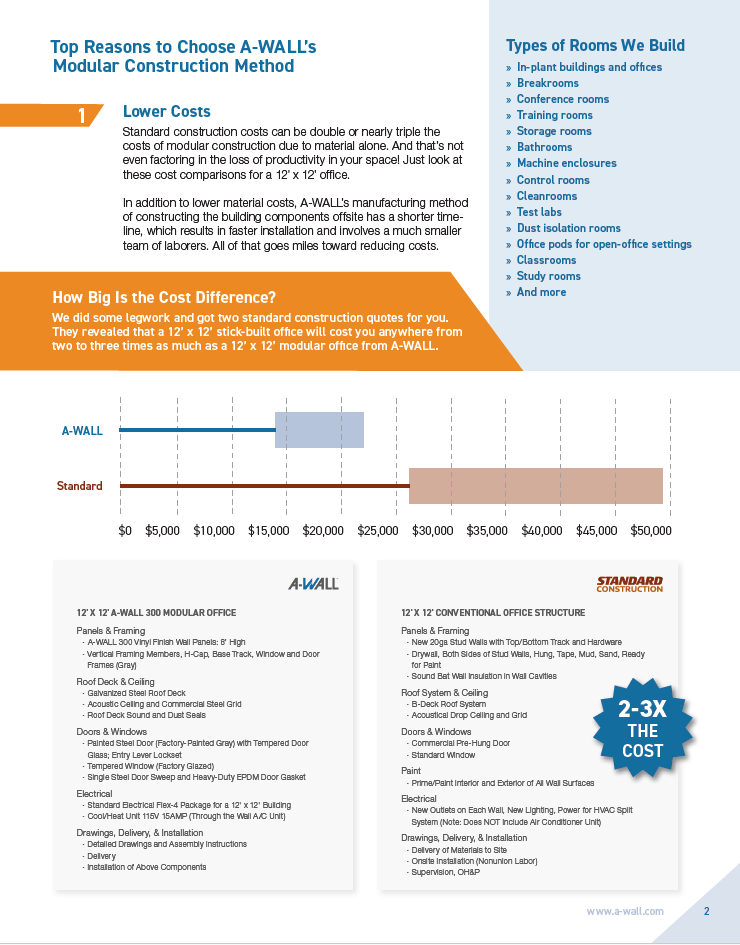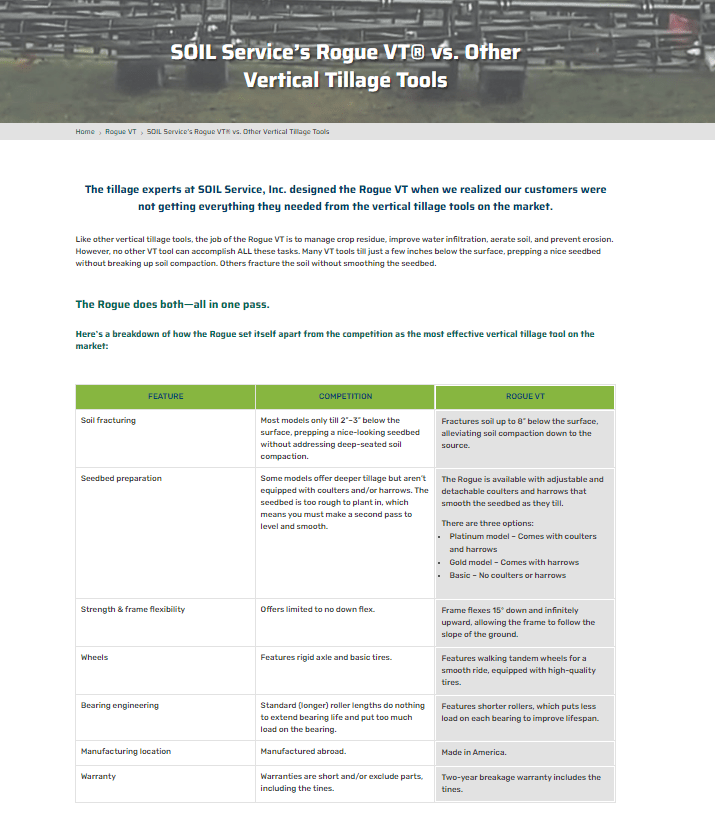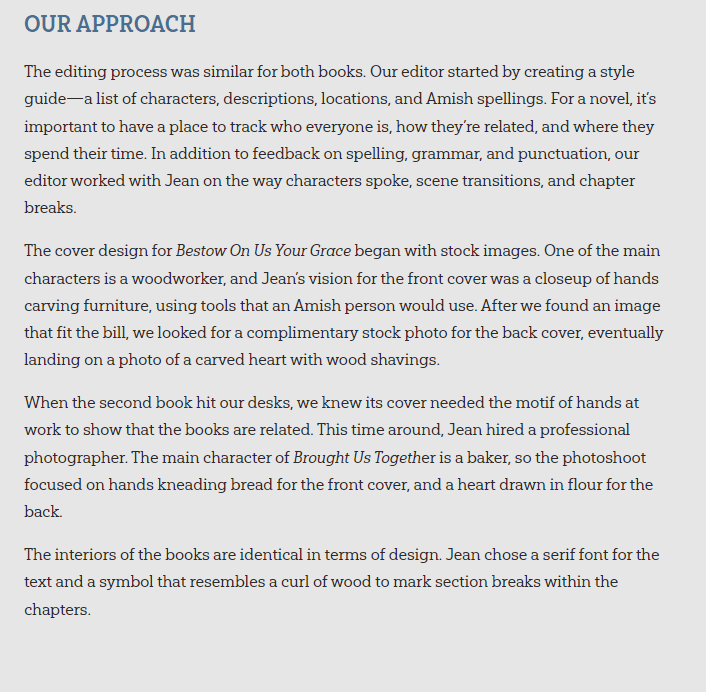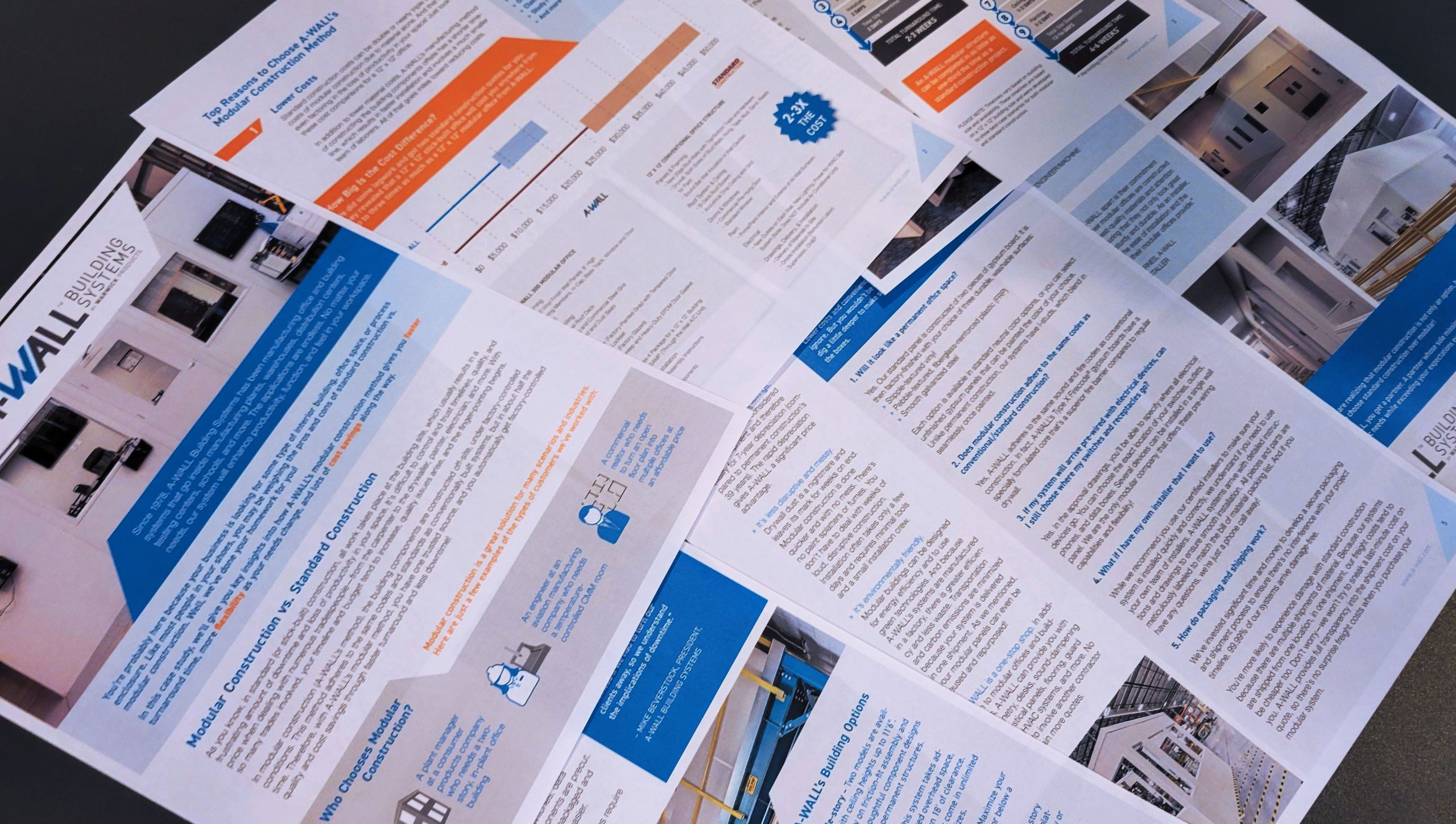by Sarah Purdy, WP editor and online content specialist
When you were a kid, you probably didn’t like being told what to do. Most of us have grown out of that phase. (We hope!) And when it comes to marketing copy, there is a much more effective strategy than simply telling customers why to choose your product or service. Instead … try showing real-life examples of how your business has helped customers just like them achieve their goals!
One way to do this is with short testimonials. But another option that allows you to build the full story and share visuals is a case study.
What is a case study?
A case study is a marketing tool that persuades someone that the products or services you offer can solve their problem. By sharing real data, testimonials, and other tangible proofs about your company, you make the logical case that customers are making a good choice when they come to you.
Case studies can vary in length, but they’re not typically very long (most are between 500 and 1,500 words). They usually cover:
- The problem or challenge
- The solution you can provide
- Data and testimonials that speak to the effectiveness of your solution
- Any limitations of your solution
- A conclusion and call to action
Case studies can be published many ways—a PDF your customers can download, a page on your website, or even a video. In the rest of this article, we’re going to break down five tips that will help you build a powerful case study.
5 Tips for Creating a Persuasive Case Study
1. Speak to your ideal customer.
The very first step of building a case study is to establish who you are talking to:
- Who is your ideal customer?
- What problem are they trying to solve?
- What data or real-life examples will be persuasive to them?
Keep the answers to these questions at the front of your mind as you start to gather data, write, and decide how you want to publish or share your case study. How you structure and present your case study should always be tailored to your industry and the needs of your customer base.
2. Tell a complete (and compelling) story.
One strategy for writing a case study is to follow a complete story arc, which would go something like this:
- An introduction, where you meet the “hero” (the customer) and learn what problem they’re trying to solve.
- A middle, where the hero links up with your company and together you go through the steps of solving their problem.
- An end, where the hero succeeds (with your help)!
Structuring your case study with storytelling can really make it resonate with an audience. If they can identify with your “hero,” they’re likely to take the next step and contact you.
Bonus tip: The words you use to tell your story are important too. Your language should evoke emotion—talk about the pain points or frustrations a customer may be facing, then how your product or service can save the day.
3. Use real data and testimonials.
The heart of your case study will be the data. There are two types of data you can leverage: quantitative and qualitative.
Quantitative data is anything to do with numbers. Cost comparisons are a common quantitative proof point you’ll find in case studies. For example, we recently worked with A-WALL Building Systems out of Cleveland on a case study comparing their modular construction solutions to standard construction. They collected standard construction quotes and were able to show that a 12′ x 12′ modular office from A-WALL costs two to three times less than a stick-built office with the same dimensions. We laid out this data in a bar chart in the case study. (Curious to see more? You can download the full case study from the A-WALL website!)

The A-WALL case study used real price quotes to break down exactly how much customers can save by choosing modular construction over standard construction.
Qualitative data is your “soft” data, like a customer testimonial or before-and-after images. You don’t need to look any farther than the Write Place’s own website for an example of a case study that uses qualitative data! Click the link to read a case study about our work with Yetter Farm Equipment on their annual product catalog. In the sidebar, you’ll find a quote from a member of the Yetter team, testifying to the positive experience he had working with us.
Whether you include quantitative or qualitative data (or both!) in your case study, make sure that the proof points you include are ones that will make an impression on your ideal customer.
4. Format your case study to be eye-catching and easy-to-read.
Your case study should not be a giant chunk of text—that’s not inviting to read! Make sure you’re using:
- Headers
- Images, graphs, and infographics
- Bulleted lists
- Block quotes
- Bolded text
These elements are more exciting to look at than plain text, and they also make it easier for readers to scan and pick out the points most valuable to them.
As an example of a webpage layout, let’s look at a case study the Write Place built for one of our clients, SOIL Service, Inc. from Niota, Illinois.
Several years ago, SOIL Service saw a need among farmers for a better vertical tillage tool, and they designed the Rogue VT. To demonstrate the value of the Rogue, we put together a webpage comparing it to a standard vertical tillage tool. You’ll notice the different levels of headings we used.
But the star of the show is the table. Here we listed out the key features of an effective vertical tillage tool, then compared side-by-side how the Rogue stacks up to the competition in those categories. It’s both eye-catching and easy to scan. It’s also programmed to display well on mobile, which is something that may require extra attention.

This table compares key features of the Rogue VT side-by-side with the competition.
5. Talk about the specific steps you took to solve your customer’s problem.
This tip is especially important for service businesses. Don’t just say you helped your customer succeed—outline the specific steps you took to get them there.
Let’s look at a different case study on the Write Place website. This one comes from author Jean De Vries, whom we helped with self-publishing two novels. We start by establishing Jean’s need, then we have a section detailing the step-by-step approach we took to get her books from drafts to published products. We talk about how we handled her editing and our strategy for her cover and interior design.

In the Our Approach section of our case study, we outline each step we took to help Jean self-publish her novels.
A solid case study can be a key piece of your marketing strategy, especially if you have a potential customer with a lot of questions or one who is considering several options.
If you’d like to add a case study to your marketing toolkit but need help pulling it together, reach out to the Write Place at 641-628-8398 or send an email to hello@thewriteplace.biz.
Sources:



